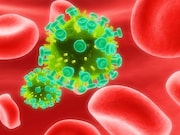Meeting 95 percent targets for diagnosis, care retention, viral suppression could help curb epidemic
TUESDAY, Feb. 26, 2019 (HealthDay News) — New HIV infections could be reduced and prevalence could begin to decline by 2030 with sufficient investment, including meeting 95 percent targets for diagnosis, care retention, and viral suppression by 2025, according to a study published online Feb. 22 in AIDS and Behavior.
Heather Bradley, Ph.D., from the Georgia State University School of Public Health in Atlanta, and colleagues estimated quantitative parameters for national HIV prevention goals by expanding previous epidemiological models using updated surveillance data from the U.S. Centers for Disease Control and Prevention.
The researchers estimated that if 95 percent targets for diagnosis, care retention, and viral suppression are met by 2025 and an additional 20 percent of transmissions are prevented through targeted interventions such as pre-exposure prophylaxis, new HIV infections could be reduced by 67 percent and prevalence could begin to decline by 2030. Meeting these goals would require a more than 35 percent increase in the percentage of diagnosed persons retained in HIV care, which would necessitate innovative models and a considerable expansion of supportive services.
“Given the unacceptable stagnation of progress in HIV in the United States overall, particularly among key minority and risk groups, a new national HIV strategy with achievable targets is critically needed,” the authors write. “Political commitment should be accompanied by adequate resources and an implementation strategy that is flexible enough to adapt to local needs and populations.”
Copyright © 2019 HealthDay. All rights reserved.








